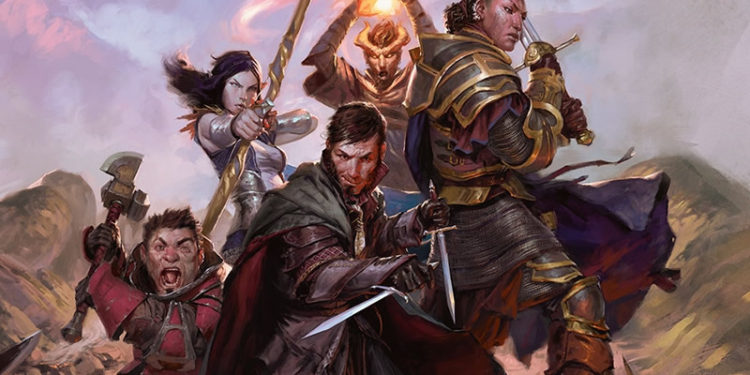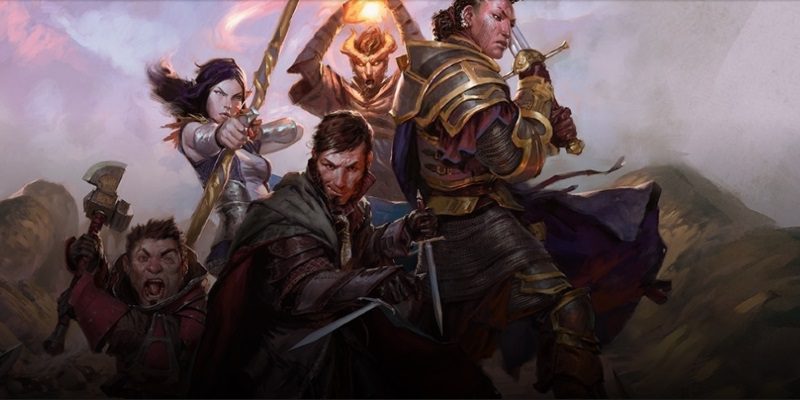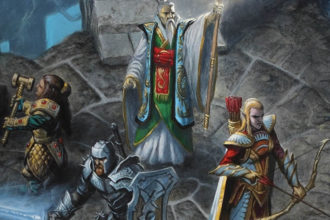Unearthed Arcana: Order Domain Breakdown

As you may already know, Mearls has been livestreaming his rapid-fire game design efforts lately, in Happy Fun Hour. I’ve only seen a few of them myself, but his commentary on their design thinking as he works is great. Sometimes it confirms what I expected, but there are surprises too. (Did you know that a lot of the barbarian’s design decisions are about rogue multiclassing concerns?) I hope we’ll see more of his Happy Fun Hour work brought to completion and released as Unearthed Arcana content. The first out the gate is the Order domain for clerics.
The Order Domain
Plenty of D&D deities are all about Law. 2e clerics could pick up the Sphere of Law (or Chaos, for that matter – but not Good or Evil), while 3.x clerics had Law, Chaos, Good, and Evil as domains. A Law-themed cleric, then, has only been distinguished up to this point by spell access. But, well, 5e cleric domains don’t work that way anymore, so let’s see what we’re getting.
The flavor text lead-in makes me worry about how you’d play an Order cleric without being more insufferable than any paladin. Unless the party plans to treat you as an authority within the group, you’ll need to take less of a hard line than this suggests. (Remember, kids, no character concept gives you the right to ruin the game for others.)
- The domain spells are mostly buffs and control spells, with some information-gathering at the top end. The heavy emphasis on control spells is going to pay off still more in a later feature, but it’s worth noting here that Order clerics are a lot more effective against humanoids than non-humanoids. Take this under advisement if the DM has given you any advance knowledge of the kinds of foes you’ll face.
- Heavy armor proficiency. This is a domain that’s going to send you into the thick of combat. Also, it fits the image for the domain of Dredd.
- Voice of Authority is warlord-y – any spell you cast on an ally also lets them make an attack as a reaction. This is a quite substantial reward for casting buffs. Opening just about every fight with bless – already one of a cleric’s best options even long past early levels – pays off even more here.
- Channel Divinity: Order’s Demand is sort of like the Archfey patron’s Fey Presence feature. Except that it’s charm-only, Order’s Demand is much better – much better area of effect, and you can cause creatures to bow down before you (fall prone). Also, it uses your Channel Divinity, so you get more uses of it at higher levels. I’m on the record as thinking Fey Presence needs a boost, so this is more or less okay. Maybe pushing the envelope a bit, but that’s all.
- Order’s Dominion borrows the concept of Expert Divination, but for enchantments rather than divinations. This is the huge payoff for preparing a bunch of control spells – you can cast for five rounds on just one 5th-level slot, if you’ve made good spell choices. Order’s Dominion is all about being a controller as a playstyle, so it’s in tension with Voice of Authority. You can cross over between the playstyles a bit by casting bless or heroism with higher-level slots.
- Divine Strike, with 1d8/2d8 force damage. If this is your first time reading my opinions on cleric domains, I’m a strong proponent of each domain granting both Divine Strike and Potent Spellcasting at 8th, so that they support both spellcasting and weapon-using play (because getting to do both is part of the essential promise of the cleric). It’s not a design argument I’m going to win, but it’s what I usually do in my own creations and campaigns.
- Order’s Wrath is the first time I’ve seen a domain build something on top of Divine Strike. When you hit a creature, you “leave behind” a damage boost that one of your allies can capitalize on in the following round. This rewards wading into combat with a weapon, or hanging back and using ranged weapons.
- EDIT: I got this wrong on my first read. Many thanks to Alert Reader Andrea del Cont for catching my mistake! What actually happens is that you “leave behind” a damage boost that each of your allies can capitalize on once in the following round. In a party of five (let’s assume you have one other non-weapon-wielding party member), you’re looking at +6d8 probable damage output, every time you land a hit as a cleric. Le wow. Still more if they have ways to make attacks as reactions (that’s what the “each turn” wording gets you), so depending on party makeup, you could plausibly be looking at a steady +10d8 damage output, distributed across the party. The only plus side to this is that the thing you tagged will die fast, so some of that damage might get lost to “it died before my turn came around.” I think this is really pushing the power level on what’s okay for a 17th-level feature.
What I see here is that the three main things you do as a cleric in combat – cast on allies, cast on enemies, and whack it with a stick – all get a boost, but you can’t easily do all three. Heroism or the almighty bless let you combine Order’s Dominion and Voice of Authority, while healing word and an Attack action lets you combine Voice of Authority and Order’s Wrath. The domain wants you to do all three, making a different choice for each round and getting rewarded no matter what. Now, a lot of domains do more than one thing, but usually you’ll see one core mechanic that gets magnified at higher levels, rather than a broad, even distribution of features.
On gameplay, I’d give this domain a shot. When it comes to character presentation and roleplay, I’d play the character as a wandering magistrate. Because of some things in my personal aesthetics, and from reading Max Gladstone’s Craft series, I’m sorry there’s no mechanics touching on magically binding contracts (other than Colin’s excellent work, I mean), but those are a tricky fit for the way most people play D&D. Pity.
Fingers crossed for getting more Happy Fun Hour content in UA. (Waaaarloooooord.)



